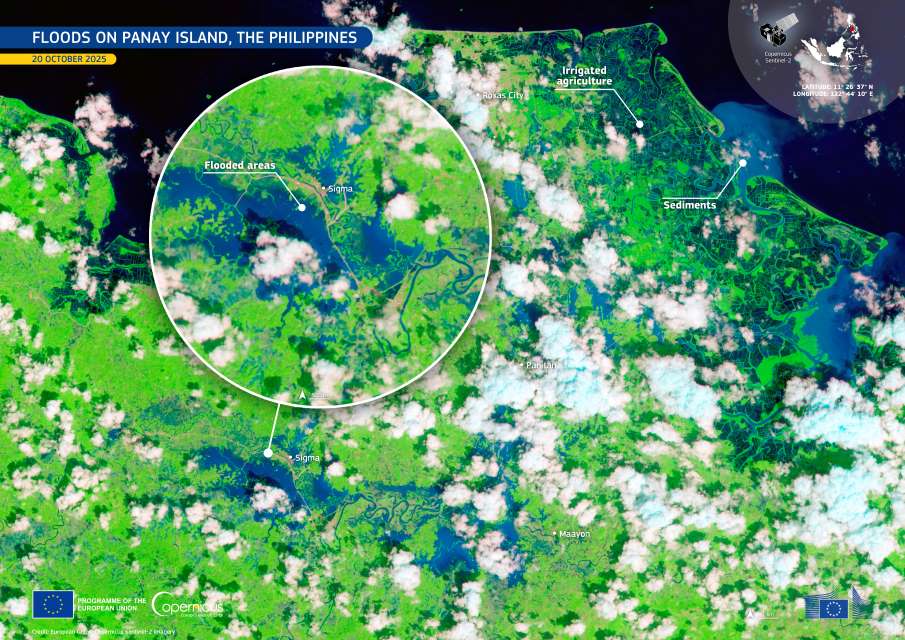Severe flooding has spread across Panay Island in the Philippines following torrential rains from Tropical Storm Ramil on 18 October 2025. Roxas City alone recorded 365.5 mm of rain in 24 hours – more than a month’s typical precipitation in a single day.
Across Western Visayas, more than 174,000 people are affected in the provinces of Aklan, Antique, Capiz, and Iloilo. At least 43 houses were damaged or destroyed, while damage assessments to infrastructure and agriculture continue. Roxas City has already declared a state of calamity.

In Capiz province specifically, 88.24% of municipalities (15 towns) experienced flooding. About 216 barangays (out of 473) were affected, including 117 that were inundated. As of 21 October, 35,537 families comprising 132,339 individuals were recorded as affected. Tragically, three deaths were reported – two due to drowning and one from electrocution.
In the agricultural sector, about 4,360 farmers were affected, with estimated production losses reaching approximately PHP 105,741,946.40.
This false-colour image, acquired on 20 October 2025 by a Copernicus Sentinel-2 satellite, shows widespread flooding along the Panay River basin. The flooded zones (in blue) extend beyond riverbanks into adjacent farmlands and residential areas.
Open satellite data like that from the Sentinel missions plays a vital role in tracking flood events, guiding disaster response, and informing recovery efforts in flood-prone regions like Western Visayas.
Featured image credit: European Union, Copernicus Sentinel-2 imagery



